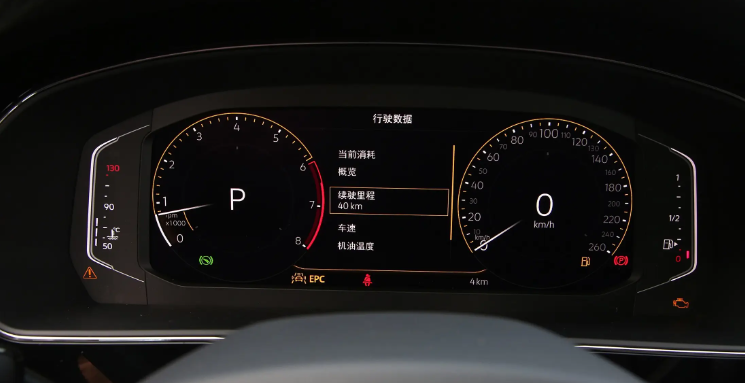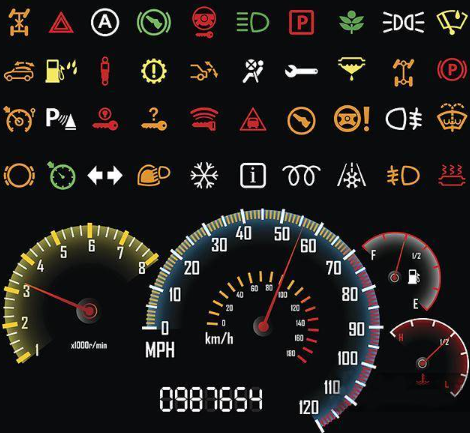What is IPC in a Car?
Instrument Panel Cluster (IPC) in cars refers to the array of instruments and displays located on the vehicleās dashboard. It plays a vital role in conveying essential information to the driver, including speed, fuel levels, engine performance, and other indicators that ensure safe and efficient driving. The IPC also manages warnings and alerts, helping the driver respond to potential issues promptly. With technological advances, the IPC has evolved from simple mechanical dials to more sophisticated digital displays.
In every car, the Instrument Panel Cluster is designed to centralize important information. The IPC houses meters like the speedometer, fuel gauge, and odometer, which were once mechanical but have now become digital. Modern IPCs also integrate with car computer systems to provide real-time data, making it easier for drivers to monitor vehicle performance. The shift towards digital clusters offers more dynamic displays, customizing what drivers see based on current driving conditions.

Types of Instrument Clusters
There are several types of IPCs that have been used in cars over the years, each offering a different level of functionality.
- Analog IPC: These traditional clusters use mechanical dials for speed, fuel, and other key indicators. Though reliable, they are less flexible than newer systems.
- Digital IPC: The digital IPC provides real-time data through a screen, displaying information like navigation, temperature, and even diagnostics.
- Hybrid IPC: Combining the best of both worlds, hybrid IPCs feature analog gauges alongside digital displays. This setup allows for traditional dials but adds dynamic elements like alerts and animations.
- Fully Digital Clusters: High-end modern vehicles often come with fully digital IPCs. These systems provide a wide range of customization options and enhanced visualization.
Components of IPC in Cars
Each Instrument Panel Cluster is made up of multiple components designed to convey key data to the driver.
1. Speedometer: Shows the current speed of the vehicle.
2. Tachometer: Displays engine RPM to help with gear management.
3. Fuel Gauge: Indicates the remaining fuel in the tank.
4. Odometer: Tracks total distance covered by the vehicle.
5. Temperature Gauge: Monitors engine temperature to prevent overheating.
6. Warning Lights: Signals for issues such as engine problems, low oil, or tire pressure.

Each of these components plays a crucial role in ensuring a smooth driving experience, allowing the driver to make informed decisions on the road.
How Does IPC in Cars Work?
The IPC is not just a passive display; it is an active part of the vehicleās computer system. Through a series of sensors and control modules, the IPC collects data from different parts of the car. These sensors track everything from vehicle speed to fuel consumption and engine health. The data is then processed and displayed on the IPC for the driver to see.
For instance, when a car accelerates, the speedometer gauge increases accordingly. If the fuel level drops below a certain threshold, the fuel gauge reflects this, and a warning light might come on. The interaction between the carās systems and the IPC is instant, ensuring drivers have access to critical information in real-time.
Functionality of IPC
The primary function of the IPC is to keep the driver informed about the carās operational status. Whether itās monitoring speed or alerting the driver to an engine issue, the IPC is the driverās first line of information. Modern IPCs go beyond basic data, often integrating GPS, vehicle diagnostics, and even entertainment features.
Many IPCs can now be customized based on the driver’s preferences. For example, a driver might choose to display navigation data instead of the tachometer if they are more focused on reaching their destination efficiently.
How IPC Displays Critical Information to the Driver?
The IPC uses various visual cues to display information. Some of the most common include:
- Gauges: These are the traditional dials like the speedometer and fuel gauge. They are easy to read and provide constant updates.
- Warning Lights: These small icons light up to signal specific issues, such as low oil levels or a problem with the brakes.
- Digital Displays: In digital IPCs, critical information is often shown on a screen, making it easier to change between different types of data as needed.
By presenting this data in a straightforward manner, the IPC ensures drivers can quickly interpret the information without taking their eyes off the road for too long.
Why Is IPC Important in a Car?
The IPC is a critical safety feature in any vehicle. Without it, drivers would have little to no information about the current condition of their car. The IPC helps drivers maintain speed limits, monitor fuel levels, and detect potential engine issues before they become serious problems. In modern vehicles, the IPC also aids in navigation, parking assistance, and fuel efficiency, offering a more comprehensive driving experience.
An efficient IPC helps reduce stress for drivers by streamlining the information they need in one centralized location. This enhances not only the safety but also the overall driving comfort, allowing the driver to focus on the road.
Interaction Between the Vehicleās Sensors and the IPC
The seamless interaction between the vehicleās sensors and the IPC ensures real-time data transfer. Sensors installed throughout the car continuously send data to the IPCās control module. These sensors monitor vital statistics, such as engine health, fuel consumption, and tire pressure.
For instance, if there is an issue with the engine, the relevant sensor will detect it and immediately communicate the information to the IPC. This triggers a warning light, prompting the driver to check the engine or visit a mechanic. This interaction helps prevent damage to the vehicle and ensures the driver is aware of any issues as soon as they arise.
Common Issues and Maintenance of IPC
Despite being a reliable part of the vehicle, the IPC can occasionally face issues. Common problems include:
1. Faulty Displays: Over time, digital IPCs might experience glitches or screen failures. This can make it difficult for drivers to access critical information.
2. Sensor Malfunctions: If a sensor fails, it may send incorrect data to the IPC. This can result in inaccurate readings, such as incorrect fuel levels or engine temperature.
3. Warning Light Malfunctions: Sometimes, warning lights may stay on even when there is no issue, confusing drivers.
To keep the IPC functioning smoothly, regular maintenance is essential. Drivers should ensure that the sensors and control modules are inspected periodically. If there are any signs of malfunction, such as inaccurate readings or unresponsive displays, they should be addressed promptly to avoid bigger issues down the line.
IPC in Cars vs. IPC in PCBs
Though they are same in the context, but they have different meanings when used in different areas. In cars, IPC refers to the Instrument Panel Cluster, a crucial part of the vehicleās dashboard. In the world of electronics, IPC stands for the Institute for Printed Circuits, now known simply IPC. Which governs standards and protocols for PCB (Printed Circuit Board) manufacturing.

This global association creates standards for the design, manufacture, and assembly of PCBs and electronics. IPC standards are widely adopted to ensure product reliability, quality, and compatibility across different manufacturing processes. By following IPC guidelines, companies can produce consistent, high-quality PCB products, whether for consumer electronics, automotive systems, or industrial machinery.


